Fun Carnival Games Activities for Kids
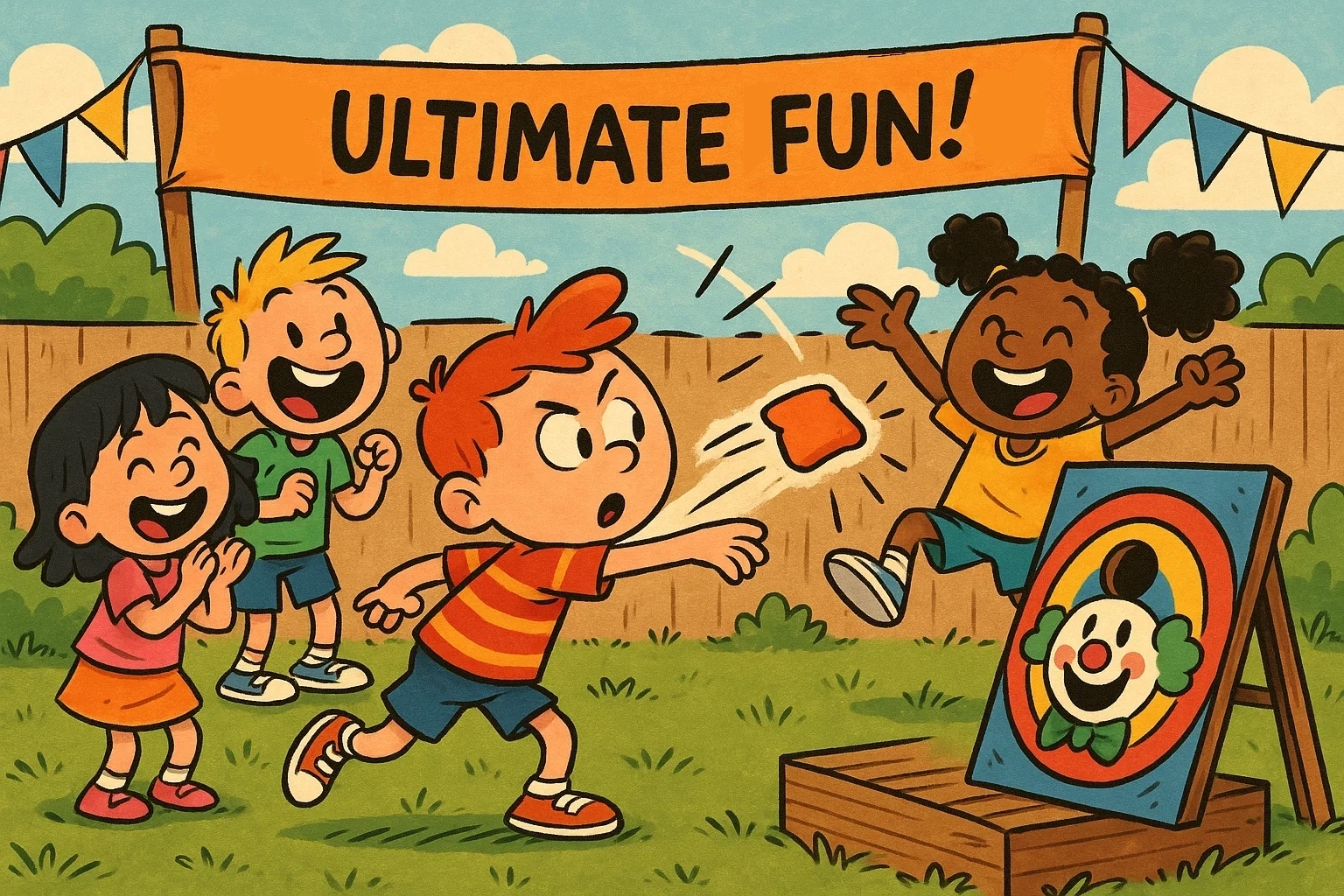
Planning a carnival for your children can feel overwhelming at first, but with the right approach, you can create memorable experiences without breaking the bank. Whether you’re organizing a school carnival, birthday celebration, or neighborhood event, the key lies in selecting activities that test different skills while keeping kids entertained throughout the day. A successful carnival balances classic games with creative DIY options. This variety ensures that every child finds something they excel at, boosting confidence while encouraging friendly competition.
Popular Carnival Games Activities for Kids
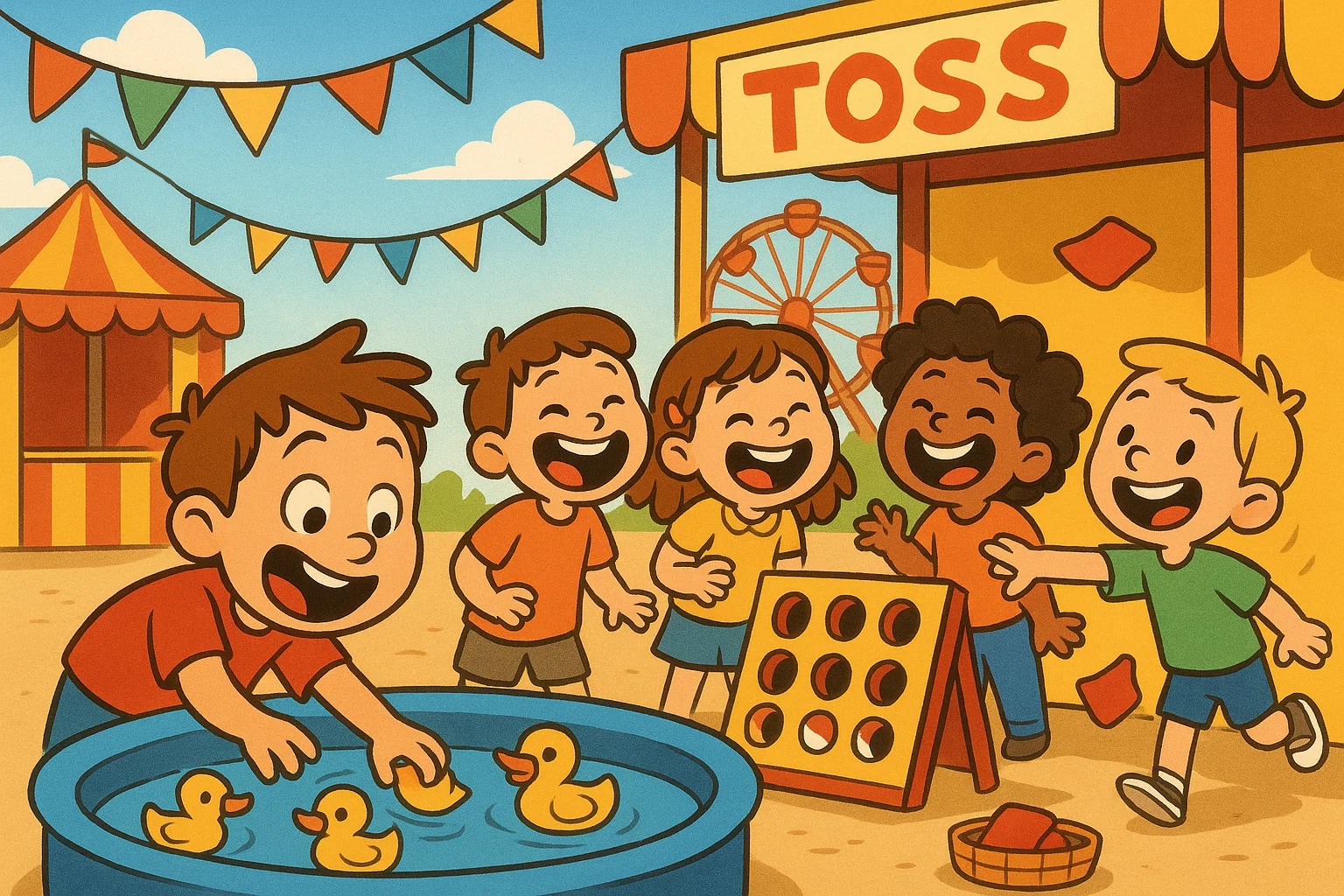
The most beloved carnival activities have stood the test of time for good reason. They’re intuitive enough for young children yet challenging enough to keep older kids interested. Let’s explore the categories that consistently draw crowds and create lasting memories.
Toss Game (Throwing) – Bean Bag Toss and Ring Toss
Bean bag toss remains a favorite carnival game because it adapts easily to different age groups and skill levels. You can adjust the distance from the target based on the participants’ ages, and the soft projectiles make it safe for crowded spaces. Many organizers create themed boards with different point values—hitting the center hole might earn 50 points while outer targets award 10 or 20 points. The ring toss game offers a similar appeal with a slightly different challenge. Kids try to throw rings onto bottles or pegs, developing hand-eye coordination with each attempt. One teacher who runs an annual school event shared that she paints old soda bottles in bright colors and arranges them at varying distances. This simple modification transforms a basic game into something visually engaging that naturally creates multiple difficulty levels.
Setting Up Effective Toss Games:
- Game Type: Bean Bag Toss; Materials Needed: Wooden board, bean bags, paint; Optimal Distance: 6–10 feet (adjustable); Skill Focus: Accuracy, arc control
- Game Type: Ring Toss; Materials Needed: Bottles/pegs, plastic rings; Optimal Distance: 4–8 feet (adjustable); Skill Focus: Precision, trajectory
- Game Type: Softball Toss; Materials Needed: Baskets, softballs; Optimal Distance: 5–12 feet; Skill Focus: Power, aim
Water Games – Squirt Gun Spray Away Challenges
Water-based activities bring energy to any outdoor carnival, especially during warmer months. A squirt gun race where kids compete to see who can move a ping pong ball across a gutter or track first generates excitement and laughter. The beauty of these games lies in their simplicity—you need only basic materials, yet they create intense moments of friendly competition. Another variation involves setting up targets that kids can knock down with water pressure. Some organizers fill bottles partially with water and challenge participants to knock them over using only squirt guns. This adds an element of strategy, as children must figure out the right angle and sustained pressure needed to topple the targets.
Active Activities – Basketball and Racing Games and Activities
Physical games give kids a chance to burn energy while developing athletic skills. A mini basketball hoop station lets children practice shooting from different spots, often with a time challenge element. You might set up three hoops at varying heights so younger children aren’t competing against older kids with clear physical advantages. Racing activities like sack races, three-legged races, or relay challenges work well because they encourage teamwork and create memorable moments. One community organizer noted that these games often draw the biggest crowds of spectators, as parents and siblings cheer enthusiastically from the sidelines. The key is organizing heats based on age groups so everyone can enjoy a fair chance at winning.
Strategy Luck Games – Duck Pond and Cake Walk
Not every carnival game needs to test physical ability. The classic duck pond lets even toddlers participate successfully. Rubber ducks float in a small pool, each marked underneath with a number or symbol. Kids pick a duck and win a prize based on what they find. This game guarantees that everyone wins something, which can be particularly important for younger participants who might feel discouraged by more challenging activities. The cake walk combines music, movement, and anticipation. Numbered squares form a circle on the ground, and children walk around them while music plays. When the music stops, you draw a number—whoever stands on that square wins a prize. The beauty of this game is its accessibility. It requires no special skills, just a bit of luck, making this inclusive for children of all abilities.
Best DIY Carnival Games Ideas
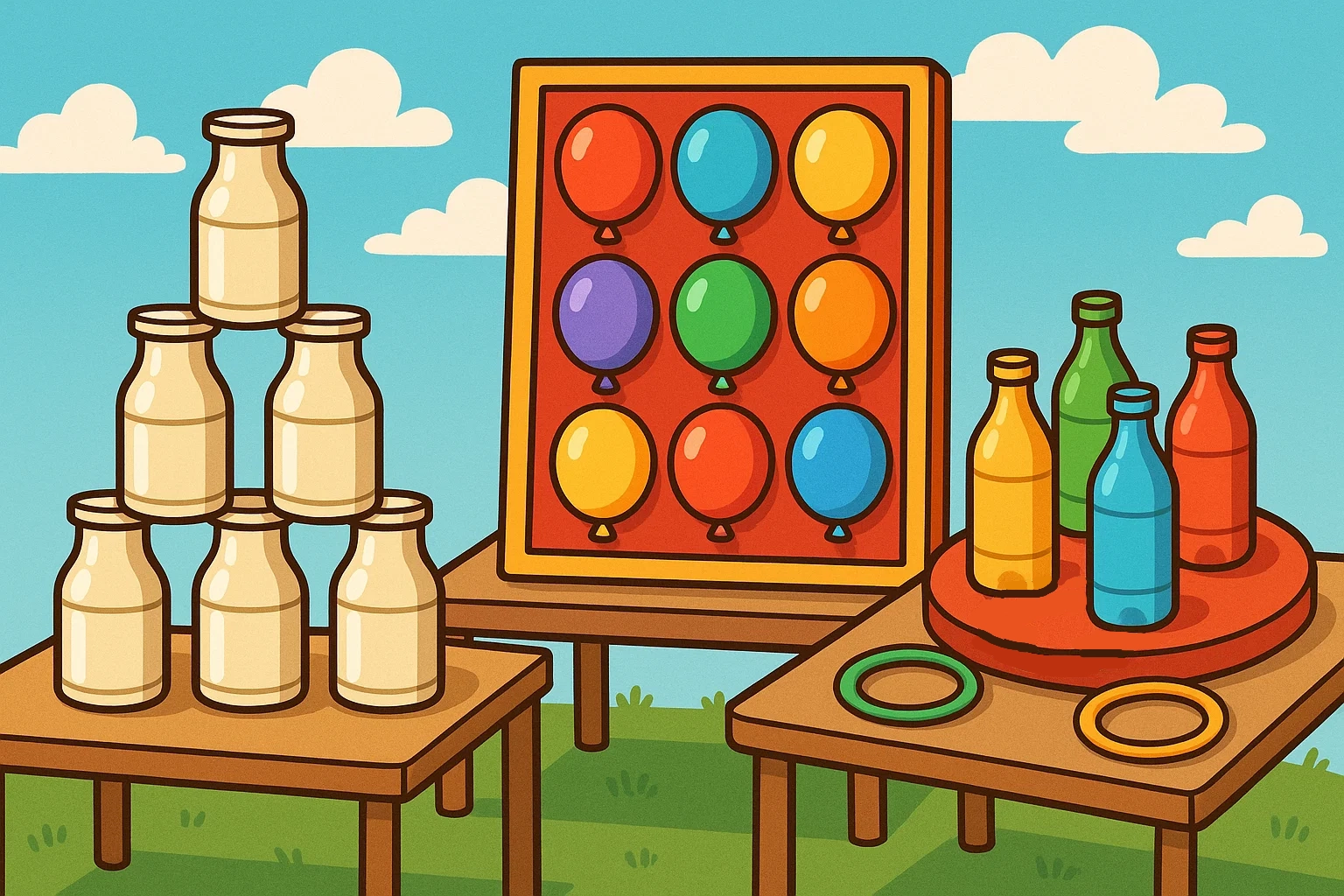
Creating your own carnival games doesn’t require professional carpentry skills or expensive materials. In fact, some of the most engaging activities come from repurposing household items with a bit of creativity and paint.
Bean Bag Toss Setup Homemade
Building a bean bag toss board from scratch costs far less than renting commercial equipment. You’ll need a sheet of plywood (approximately 2 feet by 3 feet), a saw, sandpaper, and paint. Cut a hole near the top of the board—around 6 inches in diameter works well for standard bean bags. Sand all edges smooth to prevent splinters, then let the kids help decorate it with carnival-themed designs. For the bean bags themselves, cut squares of durable fabric, sew three sides, fill with dried beans or plastic pellets, then sew the final side closed. Making 6–8 bags ensures you have enough for multiple players and accounts for any that might split during enthusiastic play. A parent who organized several school carnivals mentioned that involving children in the creation process builds excitement before the event even begins.
Milk Bottle Throw (Knocking Down Milk Bottles)
The milk bottle throw challenges kids to knock down a pyramid of bottles using a softball or tennis ball. You can collect old milk jugs or plastic bottles, clean them thoroughly, and fill them partially with sand for stability. Arrange six bottles in a pyramid formation on a sturdy table or platform. This classic carnival game tests both aim and power. Younger children might throw from closer range, while older participants can step back for a greater challenge. Some organizers paint the bottles in red and white stripes to create that authentic carnival atmosphere. The satisfying crash of falling bottles consistently draws crowds of kids eager to try their hand.
Classic Ring Toss Game
A ring toss game comes together with minimal supplies. Secure glass Coke bottles or thick wooden dowels to a board base. You can find inexpensive plastic rings at party supply stores, or make your own using rope or flexible tubing formed into circles and taped securely. Arrange the bottles in rows with varying distances between them. Placing some bottles closer together and others farther apart creates different scoring opportunities. One creative variation involves assigning point values based on bottle colors, adding a strategic element as kids decide whether to aim for the easier five-point target or risk missing to attempt a twenty-point toss.
Balloon Darts (Targeting Balloon for Prizes)
Balloon darts require adult supervision but provide undeniable excitement. Mount a large board covered in inflated balloons of various colors. Each color corresponds to a different prize tier. Kids receive three darts to throw, attempting to pop as many balloons as possible. Safety must come first with this activity. Use a designated area with clear boundaries and ensure only one person throws at a time. Some organizers place small slips of paper inside balloons with prize codes written on them, adding an extra element of surprise. The sharp pop and instant gratification make this a perennial favorite, though it may not be suitable for very young children or those sensitive to loud noises.
Ball Toss and Soda Pop Ring Toss Variations
Ball toss games extend beyond simple target hitting. Create a fun twist by floating numbered balls in a kiddie pool filled with water. Children use a small net to scoop out balls, winning prizes based on the numbers they retrieve. This variation works particularly well for younger kids who might struggle with throwing accuracy. The soda pop ring toss puts a nostalgic spin on the traditional version. Line up old-fashioned glass soda bottles and challenge participants to land rings around the narrow necks. The smaller target diameter increases difficulty, making this more appropriate for older children and adults. One carnival organizer shared that she offers double prizes for anyone who lands two rings in one turn, creating exciting moments when someone accomplishes the feat.
Renting Carnival Booth and Equipment
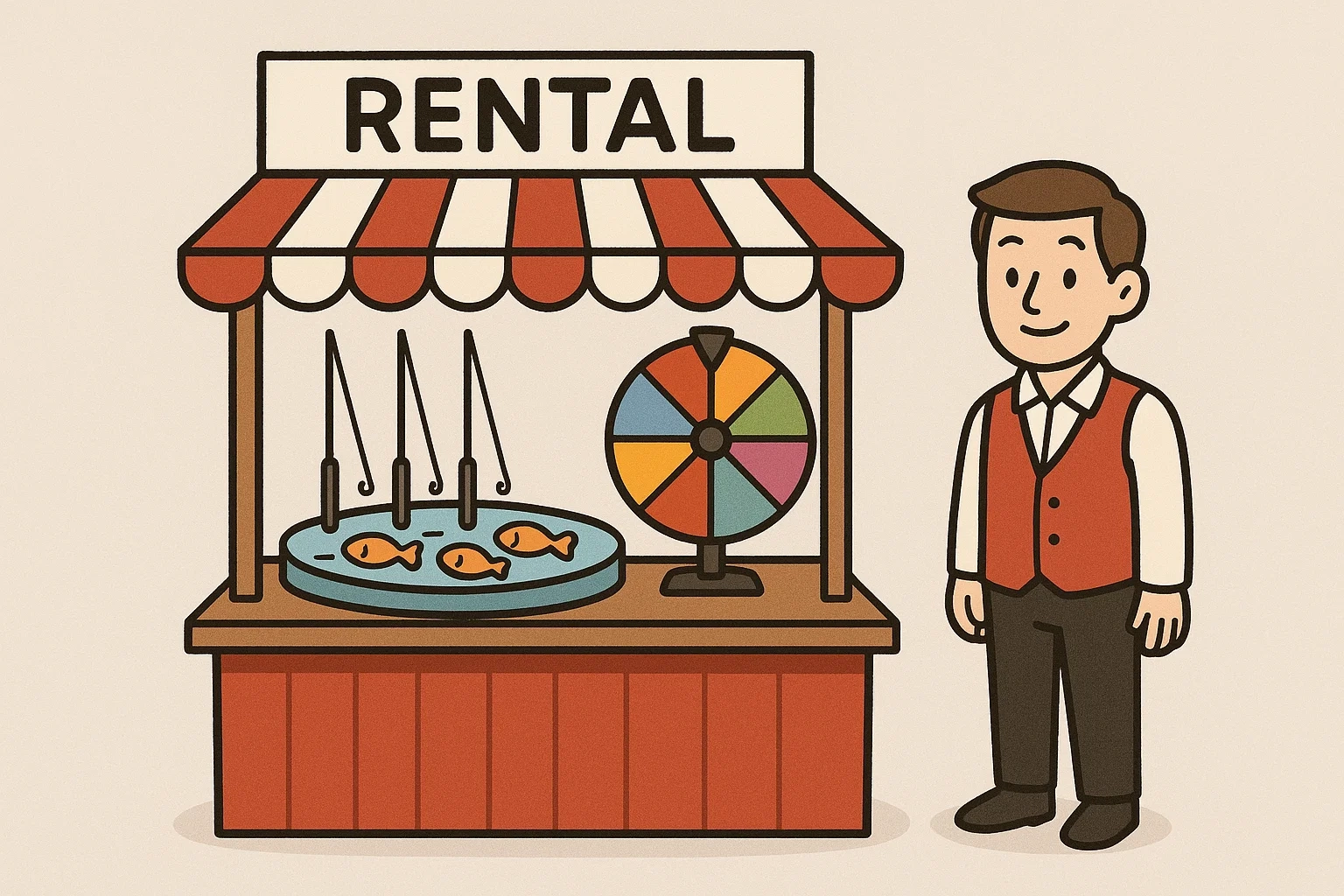
While DIY carnival games offer affordability and customization, renting professional equipment makes sense for larger events or when time constraints prevent extensive preparation. Understanding your options helps you make informed decisions about where to invest your budget.
Games Fully Equipped Booth Packages
Professional rental companies typically offer fully equipped booth packages that include the game structure, all necessary equipment, and often prizes. These packages eliminate the guesswork and preparation time. A standard package might include a game like basketball hoops with multiple balls, a scoring system, and a carnival-themed booth that creates an authentic atmosphere. The advantage of rental booths extends beyond convenience. Professional equipment withstands heavy use throughout a day-long event, whereas homemade versions may require repairs or adjustments. Additionally, rental companies often provide setup instructions and sometimes staff members who operate the booths, allowing you to focus on other aspects of event coordination.
Pricing Setup Teardown Services
Rental costs vary significantly based on the complexity of games and length of rental. Simple games like a duck pond might rent for $75–150 for a day, while elaborate attractions like a climbing wall or dunk tank can exceed $500. Many companies offer package discounts when you rent multiple booths, potentially reducing per-game costs by 15–25%. Setup and teardown services add to the base rental price but can be worth the investment. Professional crews typically arrive an hour or two before your event begins, ensuring everything is properly assembled and tested. After the carnival concludes, they handle all breakdown and removal. This service becomes particularly valuable for school events where volunteer time is limited.
Lined-Up Booth Arrangements
Strategic booth placement influences traffic flow and participant experience. Lined-up booth arrangements work well when you have a defined walking path, such as along a fence or building wall. This configuration creates a natural progression as families move from one activity to the next. Consider alternating high-energy activities with calmer games in your lineup. Placing a balloon darts booth next to a quiet face painting station might create noise conflicts and distract the face painter. Instead, group similar activity types together—put all toss games in one section, water games in another area where wet conditions won’t affect other booths.
Activity Grouping Ideas:
- Toss games (Bean Bag, Ring Toss, Ball Toss)
- Water games (Squirt Gun challenges)
- Active games (Basketball, Racing, Sack Races)
- Luck games (Duck Pond, Cake Walk)
- Creative zones (Face Paint, Photo Booth)
Center Booth Options
A center booth serves as a focal point for your carnival layout. This prominent location works best for attractions that draw crowds and create energy—perhaps a prize redemption center or a special challenge game that tests multiple skills. The center booth approach works particularly well in open areas like gymnasiums or large yards where people can circulate freely. Some event planners use the center location for a photo booth or face paint station. These activities naturally take longer per participant, so placing them centrally ensures they don’t create bottlenecks at the entrance or exit. Families can visit the center booth when they’re ready for a longer activity, while quick games remain easily accessible around the perimeter.
Carnival Game Prizes
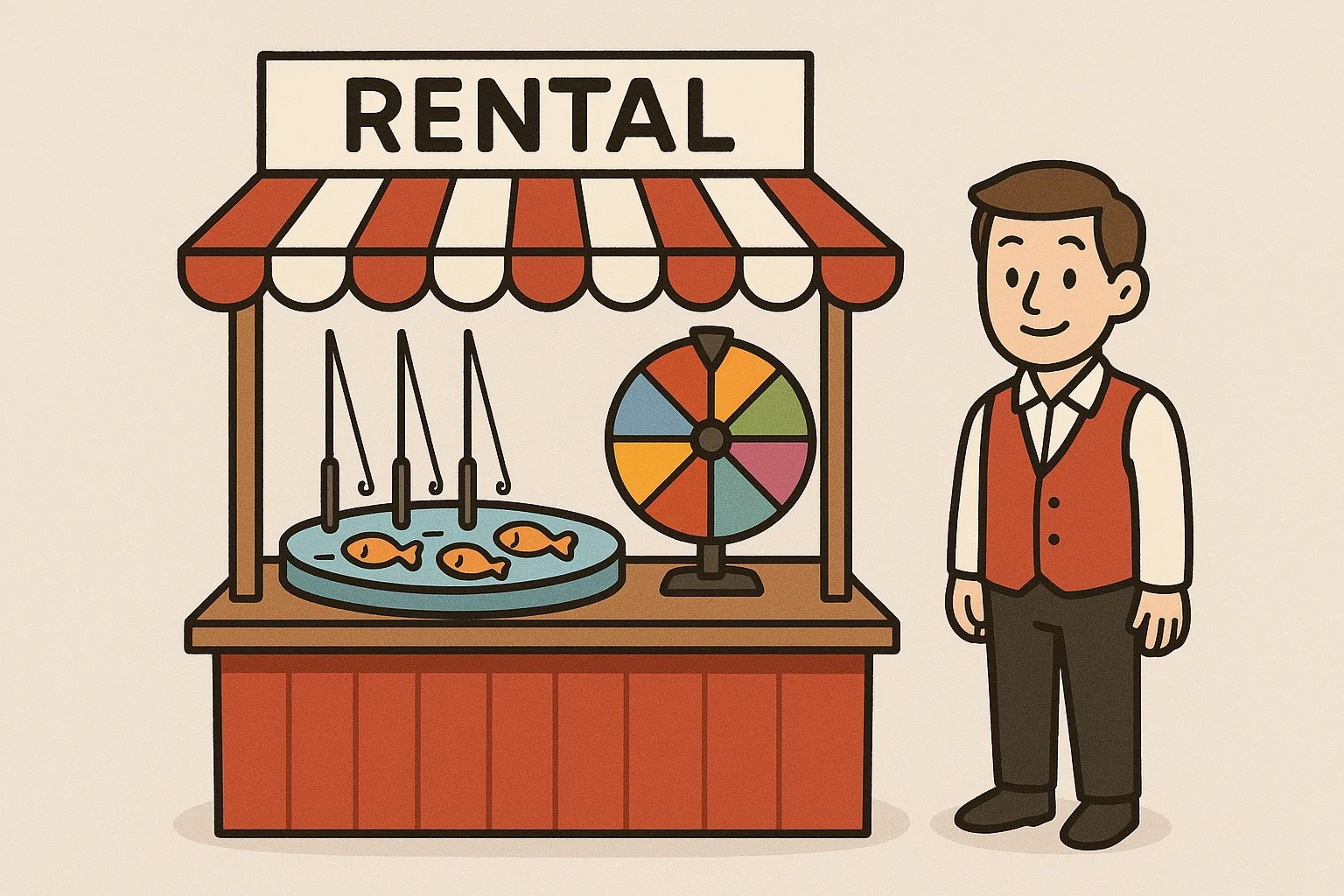
Prizes and photo opportunities transform a good carnival into a memorable experience. Thoughtful planning in these areas ensures children leave with tangible reminders of their fun day.
Prize Ideas – Lollipop Rewards
Small prizes don’t need expensive price tags to delight children. Lollipops serve as perfect low-cost rewards that kids universally enjoy. Buy in bulk from warehouse stores or online suppliers to keep costs manageable. A box of 500 mixed lollipops typically costs $15–25, making the per-prize cost just a few cents. Beyond candy, consider these budget-friendly prize options:
- Temporary tattoos (carnival-themed or popular characters)
- Bouncy balls in various sizes and colors
- Small plastic toys from bulk bins
- Stickers featuring animals, sports, or cartoon characters
- Pencils with fun erasers attached
- Mini bubbles
Create a tiered prize system where different achievements earn different reward levels. Children who score lower points might choose from the small prize bucket, while those who excel get to select from premium options. This approach manages costs while maintaining excitement across all skill levels. One parent shared that her most successful carnival used a ticket system—each game earned tickets based on performance, and kids redeemed accumulated tickets at a prize station. This method encouraged children to try multiple activities rather than focusing on a single game.
Creating Carnival Photo Booth Fun
A carnival photo booth provides entertainment and creates lasting memories. You don’t need professional photography equipment—a simple backdrop and a few props generate plenty of fun. Hang a red and white striped sheet or poster board to establish the carnival theme. Add props like oversized sunglasses, silly hats, colorful boas, and signs with phrases like “Strike a Pose” or “Carnival Fun 2025.” The designated area should have good lighting, either natural or from inexpensive clip-on lights. Position a table nearby where visitors can set their phones to take timed photos. For school events, consider assigning an older student or volunteer as the designated photographer. This ensures families get photos together and helps those less comfortable with technology. Digital photo booths offer another option. Set up a tablet with a photo booth app that automatically adds carnival-themed frames and filters. Some apps can instantly share photos via email or text, letting parents receive memories before they even leave the event.
Face Paint Stations
Face painting stations consistently rank among the most popular carnival activities. Kids can let their imaginations guide their choices, transforming into butterflies, superheroes, tigers, or princesses. Setting up a successful face painting area requires planning for both efficiency and safety. Use only face paints specifically designed for skin—never use craft paints or markers. Hypoallergenic, water-based paints minimize the risk of reactions. Keep several colors available, along with brushes of various sizes, sponges for larger areas, and water cups for rinsing brushes between colors. Baby wipes help fix mistakes and clean faces when children change their minds. Speed matters when lines form. Train your face painters to offer simpler designs that take 3–5 minutes rather than elaborate artwork requiring 15–20 minutes per child. Create a display showing available quick designs—flowers, stars, hearts, rainbows, and animal whiskers. More detailed designs can be reserved for quieter periods or as premium options.
Essential Face Paint Supplies:
- Hypoallergenic, water-based face paints
- Brushes (various sizes) and sponges
- Water cups and rinsing station
- Baby wipes for corrections
- Display board of simple designs
Easy Carnival Party Games
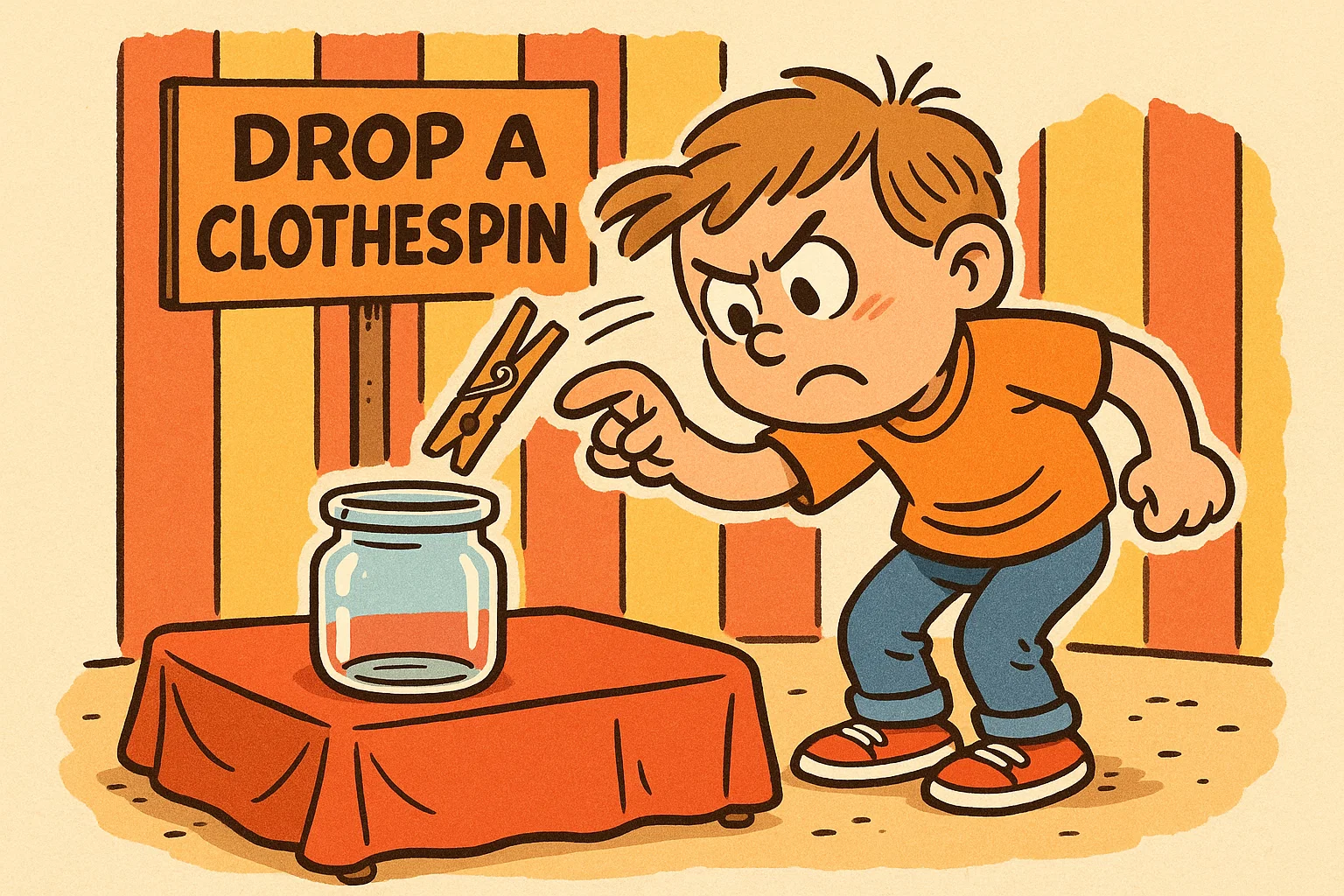
Not every carnival game needs elaborate construction or expensive materials. Some of the most engaging activities come together quickly using items you already own.
Bowl Game
Transform regular bowling into a carnival attraction by using everyday objects. Set up ten empty plastic bottles or cans as bowling pins. Use a soft playground ball as your bowling ball. Kids try to knock down as many pins as possible in two rolls. Add variety by painting point values on each pin. Knocking down the five-point pin in the back row requires more skill than hitting the front pins worth one point each. This scoring system helps level the playing field between younger children and older participants—younger kids might knock down more total pins, while older kids strategically aim for high-value targets. One creative variation involves filling bottles with colored water at different levels. The varying weights change how bottles react when struck, adding an unpredictable element that keeps the game interesting even after multiple turns.
Clothespin Drop Games and Activities
The clothespin drop game requires minimal materials but provides surprising challenge. Players stand over a glass jar or bottle and attempt to drop clothespins into the opening from shoulder height. It sounds simple, but the clothespins often bounce off the rim or land at unexpected angles. This game tests spatial awareness and fine motor control. Some organizers use different sized containers to create varying difficulty levels. A wide-mouth mason jar offers an easier target for younger children, while a standard glass Coke bottle provides a significant challenge for teens and adults.
Difficulty Levels for Clothespin Drop:
- Wide-mouth mason jar: Easiest (activities for kids)
- Standard glass bottle: Medium challenge
- Small glass bottle (soda pop): Hardest (party games)
You can introduce a fun twist by assigning different point values based on how many clothespins land in the container. Landing one clothespin wins a small prize, three clothespins earns a medium prize, and successfully dropping all five clothespins secures a top-tier reward. This progression encourages multiple attempts and creates excitement with each successful drop.
Quick Games and Activities for Parties
Time-efficient games keep energy high when hosting large groups. A “Guess How Many” jar requires no active supervision—simply fill a clear container with candy, small toys, or ping pong balls. Kids write their name and guess on slips of paper throughout the event. Announce the winner near the carnival’s end. Tic tac toe becomes a carnival game when you create oversized versions. Paint a grid on a board or use tape on the ground, then use bean bags or frisbees as X’s and O’s. Children can play against each other or compete to see how many games they can win in a set time period. A disk drop game offers quick rounds of excitement. Players stand on a ladder or elevated platform (with proper safety precautions) and drop large discs onto a board below marked with various sections. Each section has a different point value or prize tier. The discs slide across the board in unpredictable ways, making this as much about luck as skill. Spin the wheel activities work for carnivals of any size. Create a simple wheel using poster board and a brad fastener, dividing it into colored sections that correspond to different prizes or challenges. Kids will love the anticipation as the wheel slows down, revealing which section wins.
Time-Efficient Party Games:
- Guess How Many Jar (no active supervision required)
- Oversized Tic Tac Toe (bean bag or frisbee markers)
- Disk Drop Game (quick, luck-based rounds)
- Spin the Wheel (instant prize reveal)
